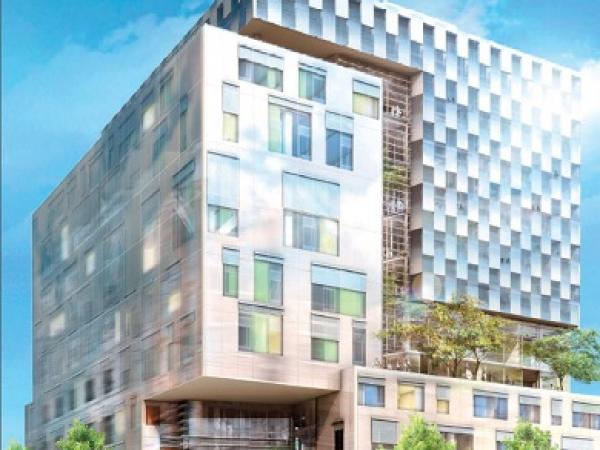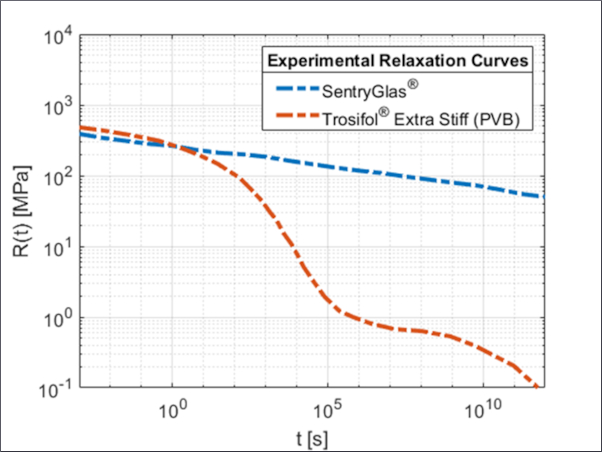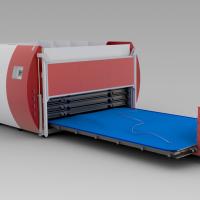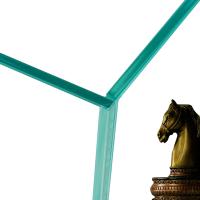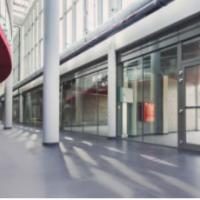The new John and Frances Angelos Law Center is the home of the University of Baltimore School of Law. Sited at the intersection of North Charles Street and Mt. Royal Avenue in Baltimore, Maryland USA, it is a fascinating example of how structural glass incorporating DuPont™ SentryGlas® can be used to not only provide eye-catching aesthetics, but also contribute functionally to one of the greenest buildings in Baltimore and the metropolitan Washington, DC region.
Maximum light capture was a major part of the design brief, coupled to innovative air handling and water capture systems. In addition, recycled materials were used extensively through-out the construction phase; the plan being to attain a Leadership in Energy and Environmental (LEED) gold rating. Efforts are currently underway to push the rating to platinum.
The 12 floor, 189,700 sqft sustainably-designed signature facility was designed by Behnisch Architekten in Stuttgart, Germany in partnership with Baltimore’s Ayers/Saint/Gross, Inc. following an international design competition, with the Whiting-Turner Contracting Company, headquartered in Baltimore, MD acting as the Construction Manager. It comprises three interlocking L-shaped building spaces, which house classroom facilities, offices and the law library.
The administrative space also includes the separate accessible clinics where students, faculty and local attorneys provide legal services to the community. An atrium over a central area connects the three building spaces providing an area for a lobby, coffee bars and lounges. The Appellate Moot Court extends down from the main lobby to a lower garden level and accommodates court hearings, lectures and other events.
.jpg)
The 12 floor, 189,700 sqft building exploits the highly transparent characteristics of SentryGlas® to compliment the low-iron glass used in the weather shield on all aspects of the building.
According to Robert Matthew Noblett, a partner at Behnisch Architekten: “We had two reasons to use an external glass façade. One of the classrooms on northern aspect of the building faces the Jones Falls Expressway, with six lanes of freeway traffic, so the thermal glazing outside of that classroom is laminated to improve the acoustical performance.
With regards to the rest of the building, for the rain screen curtain wall, we needed a surface that would protect the exterior from both the sun and high winds. We knew that it would be really nice if we could use glass, but also find a way to unify the facade visually into a single element, while incorporating a punched-window approach – where the spaces in the façade are specific to the rooms behind them.
“We knew from the beginning that we would laminate the glass on the ground floor,” Noblett continues, “providing additional protection from potential accidents or vandalism, but as we got further into the design process we decided that we wanted to laminate the whole thing. The SentryGlas® product does the job very effectively; it is a very clear alternative to other interlayers, which also do not perform as well structurally.
In this instance, SentryGlas® was the obvious answer. We also had to make sure that the SentryGlas® interlayer complemented the highly transparent, low-iron glass that we had specified, not only in the early life of the building, but throughout the life of the façade. Another important factor was edge performance. Because the rain screen is suspended or floating, the edges are completely exposed. We had to make sure that SentryGlas® offered us a very clean edge appearance.”
Mike Duffy, Operations Manager, at National Enclosure Company, which undertook the design assist and façade contracts, is also extremely positive about SentryGlas®. “Unlike typical structural wall systems, the edges are totally exposed, so from our perspective the extended warranty offered by our glass fabricator, Tecnoglass, was extremely attractive.”
In addition to the Technoglass warranty, Duffy was also very happy with the support he received from DuPont. “As we were going through the designs, including one major design change that entailed a 25% reduction in the total number of mounting brackets, DuPont was able to assist with technical support, helping us create installation solutions that really exploited the top-end performance that SentryGlas® can offer. The DuPont name carried a lot of kudos, giving the owner and design team confidence in the newer lower-bracket-count design.
.jpg)
Unlike typical structural wall systems, the edges are totally exposed, so the architects and installers had to be confident that SentryGlas® would offer a very clean edge appearance, coupled with hard wearing longevity.
“This technical collaboration actually started much lower down the supply chain,” Duffy elaborates. „The SentryGlas® required for this project was supplied as flat sheets, so we needed to let Tecnoglass know the required sizes in advance. Some of our fabricators prefer using SentryGlas® as there are fewer technical issues and the longer warranties offered by glass laminators ( up to 10 years) make it extremely attractive. At the National Enclosure Company we are getting involved with architects early in the design process – in this instance, the curtain wall was one of the first packages delivered – so it is essential that we use suppliers that can offer us technical support at every stage and in a timely manner.”
.jpg)
For decades, interlayers made of polyvinyl butyral (PVB) have been the industry standard when producing laminated safety glass. Architects are well aware of the possibilities and limitations of such glass when used extensively in façade engineering, for roofing and window panels. In contrast, SentryGlas® enables an entirely new approach because the interlayer is over 100 times stiffer and five times stronger than PVB.
As a consequence, there is an almost perfect transmission of load between two laminated sheets of glass, even at high temperatures, leading to the excellent flexural behaviour of the glass when under load – also under direct sunlight in high summer. Accordingly, laminates with SentryGlas® show less than half the rate of deflection when compared to laminates with PVB, when under the same load, and thus almost the same behaviour as monolithic glass of the same thickness.
.jpg)
REGIONAL CONTA CT CENTERS FOR DUPONT™ SENTRYGLAS®
DuPont Glass Laminating Solutions
Wilmington, Delaware U.S.A.
Telephone +1 302 774 1161
Toll-free (USA) 800 438 7225
Fax +1 302 892 7390
DuPont do Brasil, S.A.
Barueri, Sao Paulo Brasil
Telephone +55 11 4166 8542
Fax +55 11 4166 8720
DuPont China Holding Co., Ltd.
Pudong New District, Shanghai
Telephone +86 21 3862 2888
Fax +86 21 3862 2889
DuPont de Nemours Int’l. S.A.
Geneva, Switzerland
Telephone +41 22 717 51 11
fax +41 22 717 55 00
.jpg)


